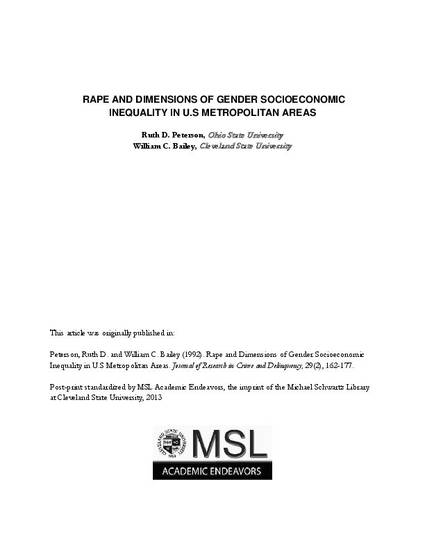
There is a growing consensus that a major cause of the rape problem is the subordinate position of women in the social, political, and economic order. Despite this consensus, there have been few structural analyses of rape and inequality. Further, extant investigations suffer from a number of serious shortcomings such that, at present, there is not a sound basis for accepting, or rejecting, rape and inequality arguments. Correcting for many of the limitations of previous studies, this investigation extends our understanding of the role of gender socioeconomic inequality and other structural factors in the etiology of rape. The authors examine the relationship between rape rates and various measures of general, racial, and gender socioeconomic inequality for U.S. metropolitan areas. Their findings show that gender income inequality is a significant contributor to rape, but gender inequities in educational attainment and occupational status do not contribute significantly to this offense. The analysis also points to a number of other structural factors, including general income inequality, that are powerful predictors of rape.
